As the number of young drug abusers in Singapore continues to rise, youth advocates say it's time to fight back smarter
Advocates, including former drug users and student volunteers, are using sports, peer support, and creative outreach to steer at-risk youths away from drugs and reshape the conversation around addiction.
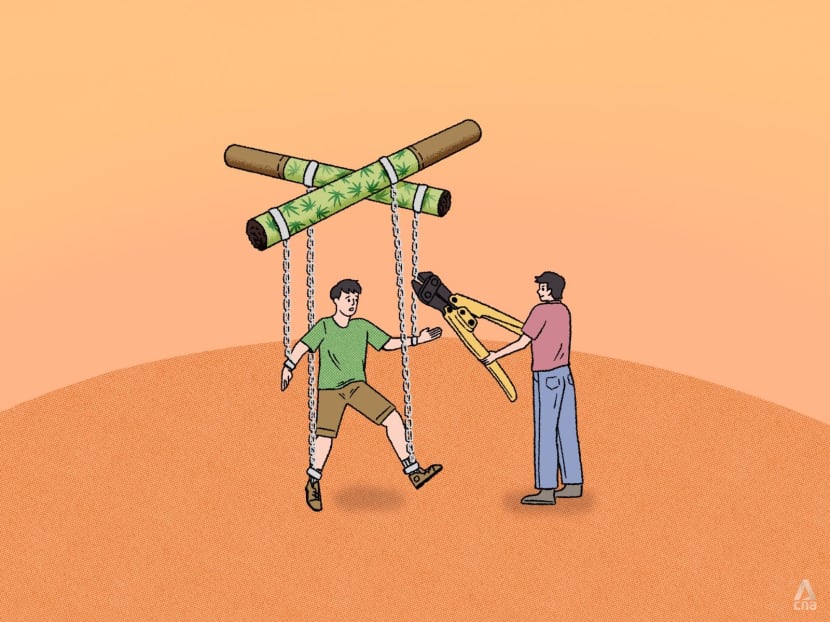
(Illustration: CNA/Nurjannah Suhaimi)

This audio is generated by an AI tool.
About four times a week, 26-year-old Mohammed Narish Mohamed Noh can be found at sepak takraw courts in neighbourhoods such as Ghim Moh, Ang Mo Kio, Yishun and Jurong from 7pm to 9.30pm.
At the beginning of each session, the Institute of Technology (ITE) student is often surrounded by young people aged 13 to 24, as he takes attendance, offers snacks and chats with them.
These sessions are more than just a game; they are a subtle initiative to steer at-risk youths away from the use of illicit drugs. The programme, conceived by Mr Narish, is backed by Impart, a charity supporting youths facing adversities.
Mr Narish saw sepak takraw as an entry point to reach out to vulnerable youths who, like him, may come from troubled backgrounds.
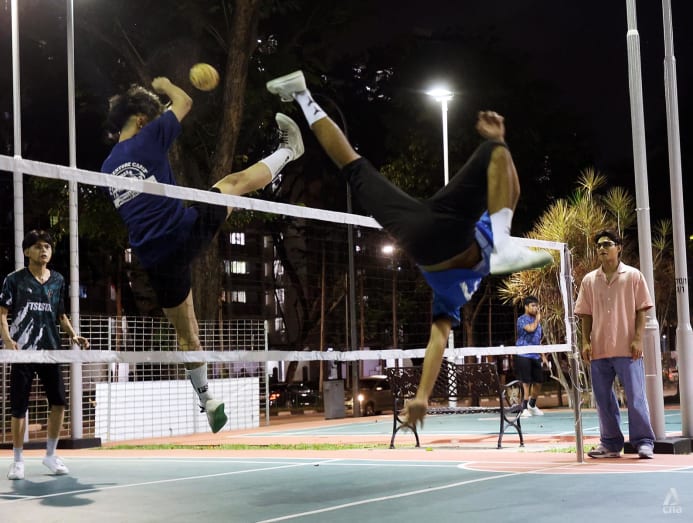
“I faced adversities during my formative years, so I understand the importance of being there for someone, especially those who need help but refuse,” said Mr Narish.
While the programme aims to keep youths in the area engaged during the evenings and away from bad company, Mr Narish said the anti-narcotics efforts are never overt, and the session primarily focuses on practising sepak takraw drills.
“The culture of sports is being disciplined, respecting one another and being a sportsman. These are really good principles that people can learn from and apply in their own lives,” said Mr Narasimman Tivasiha Mani, co-founder and executive director of Impart.
In between and after games, Mr Narish connects with the participants through casual conversations, gradually building trust and identifying those who may be experimenting with illicit drugs or feeling pressured to do so.
He said youths from disadvantaged neighbourhoods often struggle with boredom in the evenings when their parents are often out working, leading them to spend time outside their houses and seek out bad company.
"Many of the crimes young people become involved in happen at night,” said Mr Narish. “I can empathise with them and understand how difficult it is to go through this."
Meanwhile, secondary four students Rayhan Ariq Mohammad Affendy, Alveyna Ng and Izz Rusyaidi Muhamad Al-Amin, all 16, are part of the Singapore Anti-Narcotics Association (SANA) badge scheme, which encourages students from uniformed groups to launch anti-drug campaigns in their schools.
All three students are members of Riverside Secondary School’s National Civil Defence Cadet Corps (NCDCC), where they have seen firsthand the challenges their peers face with substance abuse and addiction.
When one of his friends started vaping, Rayhan decided to rally the support of other friends to keep this friend away from temptation.

These e-cigarettes are considered a gateway substance and has been shown in adolescents to significantly increase the risk of experimentation with other substances, including cigarettes and even hard drugs.
A 2023 study in the United Kingdom followed over five thousand youths and found that youths who had used e-cigarettes before 14 years of age were two times more likely to use cocaine than non-e-cigarette users.
Rayhan and his friends realised that rattling off a list of the negative effects of vaping would probably fall on deaf ears. So instead, they kept their friend distracted with healthier activities and checked in on him constantly.
“We kept him as busy as possible – constantly calling, messaging and staying by his side at school to make sure he was never alone,” said Rayhan. Their efforts paid off, and within a few weeks, they successfully helped their friend greatly reduce his vaping habit.
As hard as these young advocates are working to persuade their peers to stay away from illegal substances, the latest news reports present a sobering reality, reflecting an increasingly relaxed view among youths towards drug use.
Last month, the Central Narcotics Bureau (CNB) annual statistics report saw an increase in youth drug abuse even as Singapore’s drug situation remained under control.
Of those newly arrested last year, about 52 per cent were below 30 years old, compared with 51 per cent in 2023.
The number of new drug abusers arrested under the age of 20 increased by 30 per cent.
Moreover, 61 per cent of the 199 arrested for cannabis were new abusers, with 57 per cent of them below the age of 30.
CNB said the number of cannabis abusers arrested in 2024 was higher than the annual average recorded over the past 10 years.
Out of the 720 new methamphetamine abusers arrested, 53 per cent were below 30 years old. The number of newly arrested abusers of this drug also increased from 63 per cent in 2023 to 75 per cent in 2024.
In a report by CNA, CNB acting director Leon Chan said that the number of new abusers arrested for cannabis below 30 years old suggested a "growing trend of permissiveness towards cannabis among our youths".
The youngest person arrested for drug abuse was 13 years old, said Mr Chan.

GOING BEYOND 'SAY NO TO DRUGS'
In light of this concerning trend, youth advocates say it might be time to rethink how Singapore frames its messaging around the harms of drug use, especially when reaching out to young people.
“It can't be too straightforward,” said Mr Narish, who observed that there are many reasons why young people turn to drugs, including impulsivity and not understanding the seriousness of the effects of drugs on their health and lives.
“For young people, the more you say 'no', the more they want to do it,” he said.
Mr Narish added that youth drug use can often be a response to difficult life circumstances, and effective drug advocacy should focus on uncovering these deeper underlying reasons.
Experts noted that the factors leading to drug use are becoming more intricate and layered, which complicates efforts to effectively convey anti-drug messages to youngsters.
“Youth drug use is a complex, multi-faceted issue and the reasons why youth start or persist in taking drugs vary,” said Mr Nicholas Netto, senior lecturer of the social work programme at Singapore University of Social Sciences.
Mr Netto, along with other experts, added that the growing global acceptance of cannabis, particularly its legalisation in Thailand, has added another layer to this challenge, reinforcing the perception that marijuana is “harmless”.
“Perhaps what has increased in the past decade are more liberal views articulated by youth on drug-taking, and it is not uncommon to hear youth justifying the use of what is perceived as ‘soft drugs’," said Mr Netto.
Mr Tan Chong Huat, chairman of the National Council Against Drug Abuse (NCADA) added that social media further amplifies these perceptions, exposing youths to “pro-cannabis narratives” that downplay the risks.
Agreeing, 32-year-old Mohammed Nabil Saeed, who is a peer leader with SANA, said that a large part of his advocacy work is undoing all the misinformation about drugs that is often portrayed in the media.
Mr Nabil works with persons in recovery and their families through the Yellow Ribbon Community Project and delivers outreach talks at schools.
“I feel the way drugs are being portrayed in those media, you get a sense that drugs aren't that bad,” said Mr Nabil, who is now in law school on his way to getting a law degree.
His advocacy work is personal to him: He has previously served three stints in prison, totalling seven years, for drug use, possession and trafficking when he was 18.
And his lived experience has become a tool that has made his advocacy more effective and impactful, he said.
“If you want someone to tell you about something, you want that person to have been through it, right? I feel that it is pretty powerful to get through to someone.”
After running the sepak takraw programme for nearly two years, Mr Narish said that seeing youths choose to return to school and excel, while sometimes even juggling a job, has been the most meaningful outcome.
“Journeying with them, being able to support them and getting them to seek help is the most rewarding part,” he said.
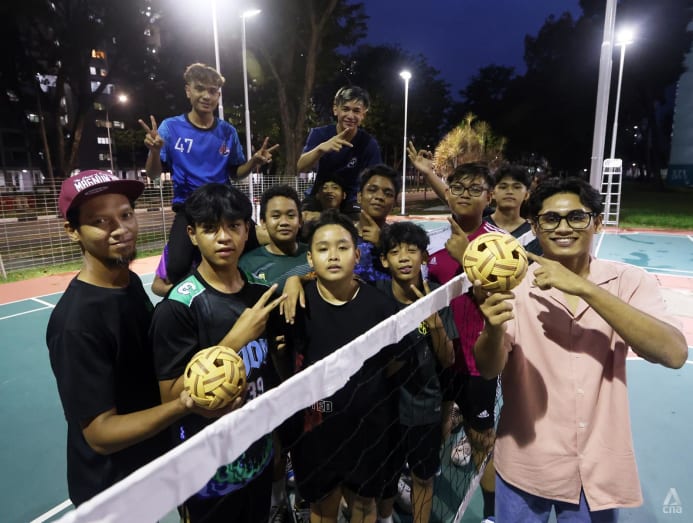
Instead, they observe their behaviour over time, wait for them to open up and find ways to offer support and guidance.
Meanwhile, other youth drug advocates spread the anti-drug efforts in creative ways, such as through their own scripted films or stop-motion videos.
Some of them told CNA TODAY that even though their peers seem to understand the dangers of drug use, there is a lot of skepticism too.
“A few of my friends have been questioning why I am partaking in anti-drug advocacy work, as they do not realise the significance of taking drugs and how taking drugs can ruin lives,” said 15-year-old Ethan Daniel Lee from Anglo-Chinese School Independent.
Ethan, along with fellow 15-year-olds Gideon Ng Zhi Wen, Jaren Koh Zhen Jie and Nishan Subramoniam, worked under the Sana Badge Scheme with their uniformed group to create a two-minute stop-motion video using Lego pieces that showed the harmful effects of illicit drugs.
“Their attitude towards drugs is, as long as they don't get caught, it's okay,” said Ethan. “And because of those views, they keep questioning me about why I am fighting for such a cause.”
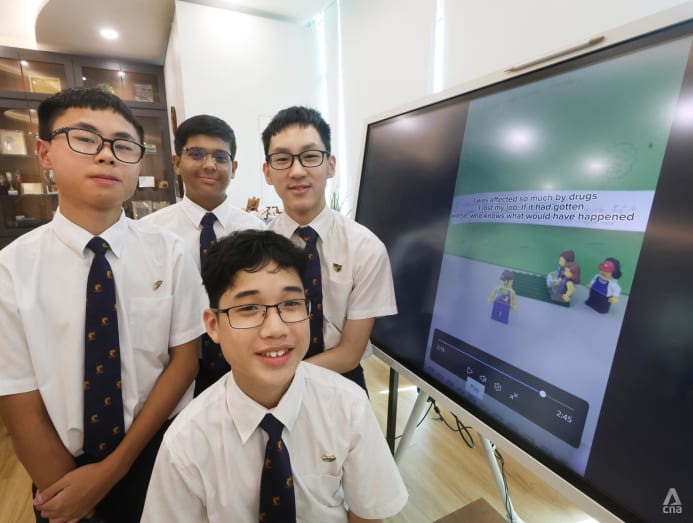
Similarly, youth drug advocate Shane Christopher Lum, 25, from the Singapore Institute of Technology (SIT) has faced his fair share of skepticism in his work as most think that his effort "may not bear any fruit".
Mr Lum is a DrugFreeSG Champion who advocates for a drug-free lifestyle and helps his peers make healthier choices amidst stress and pressure.
When he and fellow civil engineering students Lokeswari Ragu, 22, and Timothy Sim, 24, made a video to raise awareness about drug abuse, they managed to rope in some peers to help.
But he added: "There were many more people whom I reached out to who did not believe that advocacy work will make any difference."
Mr Lum said the topic of drug abuse is something his peers have heard about since their primary school days, so they see it as a passe issue that does not require more attention.
"Most also believe that the government's efforts are enough to keep the matter at bay but the truth is, it is still a pressing and concerning issue amongst youths."

THE RISING TREND OF YOUNG DRUG USERS
Despite Singapore’s strict anti-drug laws and zero-tolerance policy, recent surveys show that drug users are getting younger, and the problem is worsening.
The 2022 Health and Lifestyle Survey by the Institute of Mental Health (IMH) found that the average age at which drug users in Singapore start taking illegal substances is about 16 years old.
Based on the survey findings, it is estimated that about 0.7 per cent of Singapore residents had consumed an illicit drug at least once in the last 12 months.
The survey also revealed that 52 per cent of abusers reported starting first with cannabis. And among those who had done drugs, most said they did so at home or at a friend's home.
In NCADA's 2023 National Drug Perception Survey, it was found that 18 per cent of the 3,000 youths surveyed reported that they knew someone who had taken drugs.
This figure has increased from 10.6 per cent in the previous survey conducted in 2019.
The survey also found that while 90.4 per cent of youths agreed that drug-taking should remain illegal in Singapore, only 79.3 per cent supported the continued criminalisation of cannabis.
In response to queries from CNA TODAY, a CNB spokesperson said: "We are concerned that drug abuse starts at such a young age, and at home, where there should be parental supervision and young people should be safe.
"It is also worrying that youths are adopting more permissive attitudes towards drugs."
National anti-drug efforts
Several initiatives have been rolled out by organisations and the government to appeal to youths and curb drug abuse.
To combat the rising attitude of permissiveness towards drugs among youths, the CNB launched its latest campaign, “Uninfluenced”.
In its first year, the campaign aims to challenge existing views on drug abuse by examining how different influences shape our attitudes and how our responses to drugs can change over time
In schools, the CNB and the Ministry of Education (MOE) have strengthened anti-drug messaging by integrating Preventive Drug Education (PDE) across subjects such as science, social studies and character and citizenship education.
Another programme under the PDE is the Anti-Drug Ambassador Activity led by CNB. This initiative is designed for Primary 4 and Primary 5 and features activity booklets with engaging storylines and interactive activities.
A key component of the AAA programme is the Anti-Drug Montage Competition, where schools create montages around the theme "Remembering a #DrugFreeSG". In 2024, 67,500 students from 151 schools took part in AAA.
Meanwhile, the DrugFreeSG Video and Essay Competitions encourage young people to critically examine the societal impact of drug use.
Recognising the influence of social media, authorities have ramped up digital advocacy with campaigns like #CNBExplains and #SingaporeansAgainstDrugs that combine human interest stories, fact-sharing, and viral content to raise awareness about the harms of drugs.
Volunteer-led efforts, including the DrugFreeSG Advocacy Network, have also engaged youths to take an active role in spreading anti-drug awareness.
WHY MORE YOUTHS ARE TURNING TO DRUGS
Associate Professor Lee Jungup at the National University of Singapore said that while “traditional motivators” such as peer pressure and curiosity persist, emerging trends indicate a significant shift, especially technology, social dynamics and mental health matters.
Rising rates of anxiety, depression and stress may have contributed to a rise in substance use as a coping mechanism, said Assoc Prof Lee, who is from NUS' social work department.
According to the National Youth Mental Health Study (NYMHS) in 2024, about one in three youths (30.6 per cent) aged 15 to 35 years in Singapore reported experiencing severe or extremely severe symptoms of anxiety, depression, and/or stress.
“Adolescents facing mental health problems, severe trauma, high-stress levels, or a sense of hopelessness and inability to cope are especially vulnerable to drug use,” she added.
She noted that the rise of digital platforms has also made drug procurement more accessible, exposing youths to online drug markets.

Mr Monteiro added: “In my experience, few things make youths tune out more than being talked down to or treated younger than they are.
"It is possible that youth do not know the whole picture (when discussing substances), but they probably know some of the picture.”
Agreeing, 15-year-old Natasha Maya from Pei Hwa Secondary School said when adults try to talk to her peers about drug abuse, they inadvertently come across as “naggy”, which immediately turns off their audience.
Natasha also participated in SANA Badge Scheme as part of being in her school’s NCDCC.
“When youths realise and know the people suffering from addiction are just like their normal friends and peers, I think that has quite a big impact, rather than an adult just constantly reminding them,” she said. “It goes in one ear and goes out the other.”
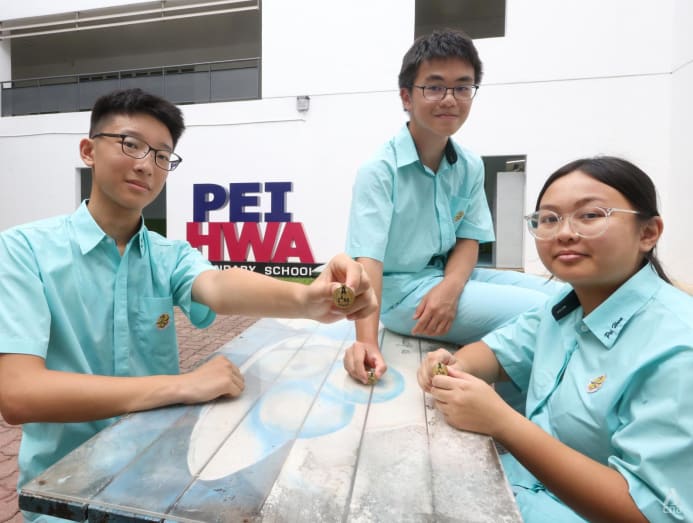
“The strict laws on drug abuse in Singapore act as a strong deterrent, but there is a need for more relatable and engaging content that connects with today’s youth," said the civil engineering student.
Indeed, anti-drug advocate Mr Issac Goh, himself a former drug user, said the singular, sweeping message to say no to drugs might not work in the next 10 years.
The 27-year-old from Architects of Life (AOL), a social enterprise dedicated to empowering at-risk youths and ex-offenders through outreach and development programmes, noted that helping youths understand the consequences of specific drugs could be an effective deterrent, considering the vast array of drugs available on the market.
For example, he said, an anti-drug campaign could zero in on the ill effects of taking party drugs, which are more commonly used among youths, instead of simply stating that all drugs are bad.
HOW REGIONAL DEVELOPMENTS PLAY A PART
One major factor why the drug problem is so intractable is that Singapore does not operate in a silo.
Developments in neighbouring countries, especially Thailand and Myanmar, have had a major impact on both the attitudes of Singaporean youth towards drugs, as well as access to these illegal substances.
In June 2022, Thailand became one of the first countries in Asia to decriminalise marijuana. This led to widespread accessibility, with dispensaries appearing across the country and recreational use becoming increasingly common.
With Thailand being a popular holiday destination, it became rather common to hear stories of Singaporean youths going to Phuket, Bangkok or Krabi and consuming marijuana there, said the anti-drug advocate Mr Goh.
"You could say it has become our (Singaporean's) ritual," said Mr Goh.
"Every time there is an event like New Year’s Eve or Songkran (Thai New Year), it feels like 'open doors'; we're going to travel there and since we're there, why not? Right?"
“The mentality of Singaporeans when we travel is: Wow, the things we cannot do in Singapore are things we have to do here,” said Mr Goh. “But just because it's there doesn't mean we need to do it.”
For nearly two years after the decriminalisation, Thailand witnessed the runaway expansion of the cannabis industry, with the launch of tens of thousands of cannabis cafes and retailers.
The development prompted public concern about marijuana abuse, and in May 2024, Thai authorities said they planned to reverse course and re-criminalise cannabis as a class five narcotic, which would make it illegal to possess or consume.
Two months later, however, the Thai government said it would legalise marijuana for medical use.
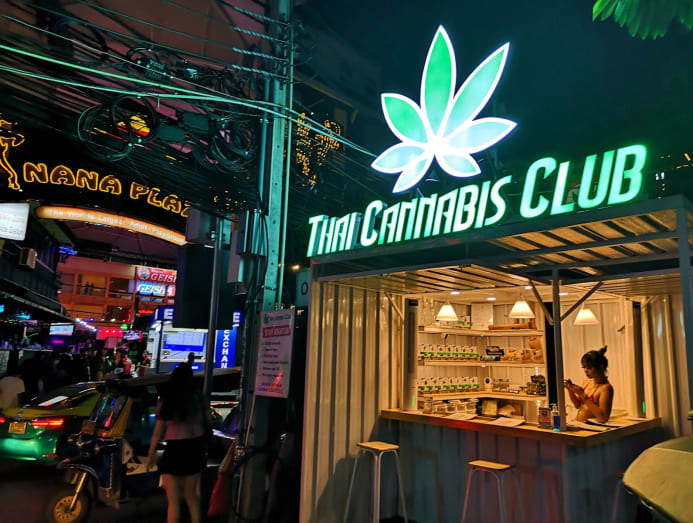
The breakdown of law enforcement in Myanmar's drug-producing regions, such as Shan state, has allowed criminal syndicates to scale up production, flooding the regional market with drugs such as methamphetamine, ecstasy, ketamine and yaba (a combination of methamphetamine and caffeine), at slashed prices.
Most of these drugs pass through Thailand, which serves as a vital transit point for illegal drugs originating from the Golden Triangle, the area where northern Thailand, Laos, and Myanmar converge.
As a result, a 2024 United Nations Office on Drugs and Crime (UNODC) report showed that the authorities in Thailand in 2023 seized 648.9 million yaba tablets and 26.4 tonnes of crystal methamphetamine, commonly known as ice.
This was a huge jump from the seizures made in 2019 of 395 million yaba tablets and 17.6 tonnes of ice.
In January this year, The Straits Times reported record seizures of synthetic drugs in East and South-east Asia that are believed to be from Myanmar.
In the article, Thailand’s Office of the Narcotics Control Board said the Thai authorities had seized 488 million yaba tablets and almost 10 tonnes of ice along the Thailand-Myanmar border in 2024 as of September.
USING THEIR PAIN POSITIVELY
Looking back on his time in prison, the youth advocate Mr Nabil does of course have regrets: "Seven years, it's a whole chunk of my youth in jail. I'll never get that time back, and that's a fact."
Leaving prison and reintegrating into society has been no walk in the park either.
"When you go to jail, your life pauses at the point where you were arrested," he said. "Fast forward five years, you are dumped back into society, and then your life resumes."
Encounters with other former drug addicts can be triggering, he added, and the lure of narcotics is something he has to work hard to fight.
Still, Mr Nabil is grateful to have turned his struggles into something positive and now uses his experiences to help others as he completes his fourth year of law school.
Mr Goh can certainly relate. Although he is an advocate for a drug-free lifestyle now, he said drug dealers who still have his contact number from the old days still reach out to him to offer him drugs every now and then.
And even as he has found new and healthier ways to cope with life's daily stressors, he admits that it can be a struggle sometimes to keep on the straight and narrow, especially when the stress gets overwhelming.
But what keeps him grounded always is the heart-wrenching memory of his mother’s reaction to his arrest.
She had been in the shower when it happened, and when he told her he was heading to the police station, she simply replied that she would wait for him to return.
“The officer told me, ‘You want to tell your mother the truth? Don’t make her wait for nothing',” said Mr Goh.
When she stepped out of the bathroom, she found Mr Goh kneeling on the floor in handcuffs, surrounded by two officers — a moment that would stay with him forever.
Mr Goh had a six-month stay in a Drug Rehabilitation Centre (DRC). Following his release, he relapsed into drug use, resulting in a second arrest and an extended period of rehabilitation.
Reflecting on his journey and his own experiences, he reiterated that it is foolhardy to simply tell youths to stay away from drugs because they are harmful.
"I can only share my story and see if they connect to that story," he said.
"The most important thing for us is to get the youths thinking and reflecting on whether this is what they want for the rest of their lives.”
Editor's note: A previous version of this article misspelled Mr Varian Monteiro’s name. We apologise for the error.








